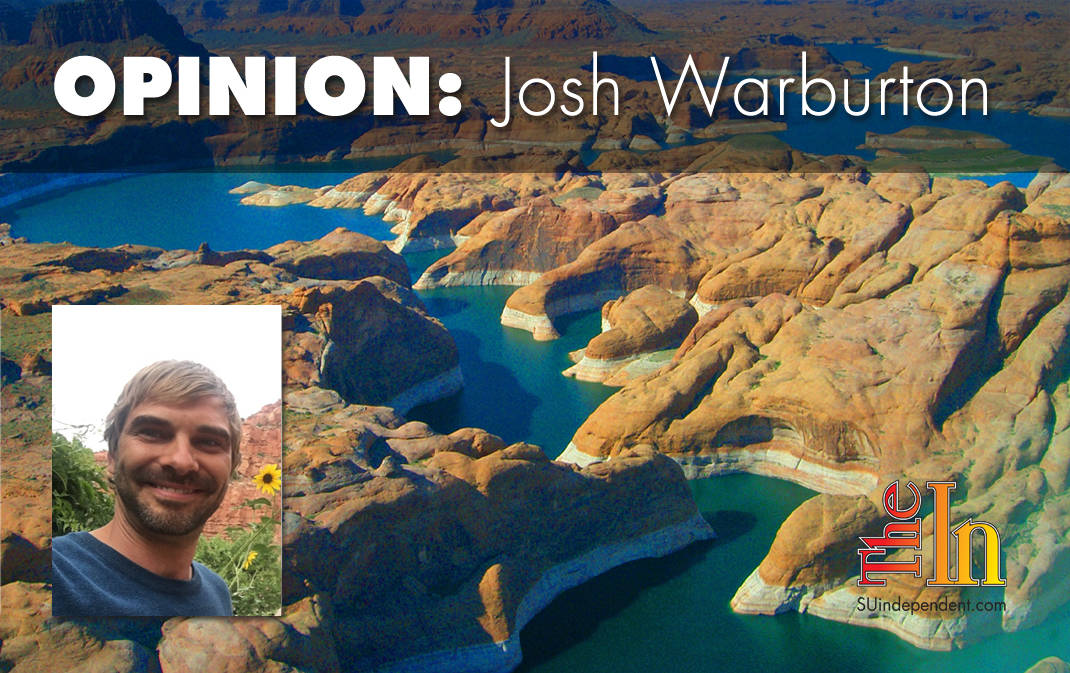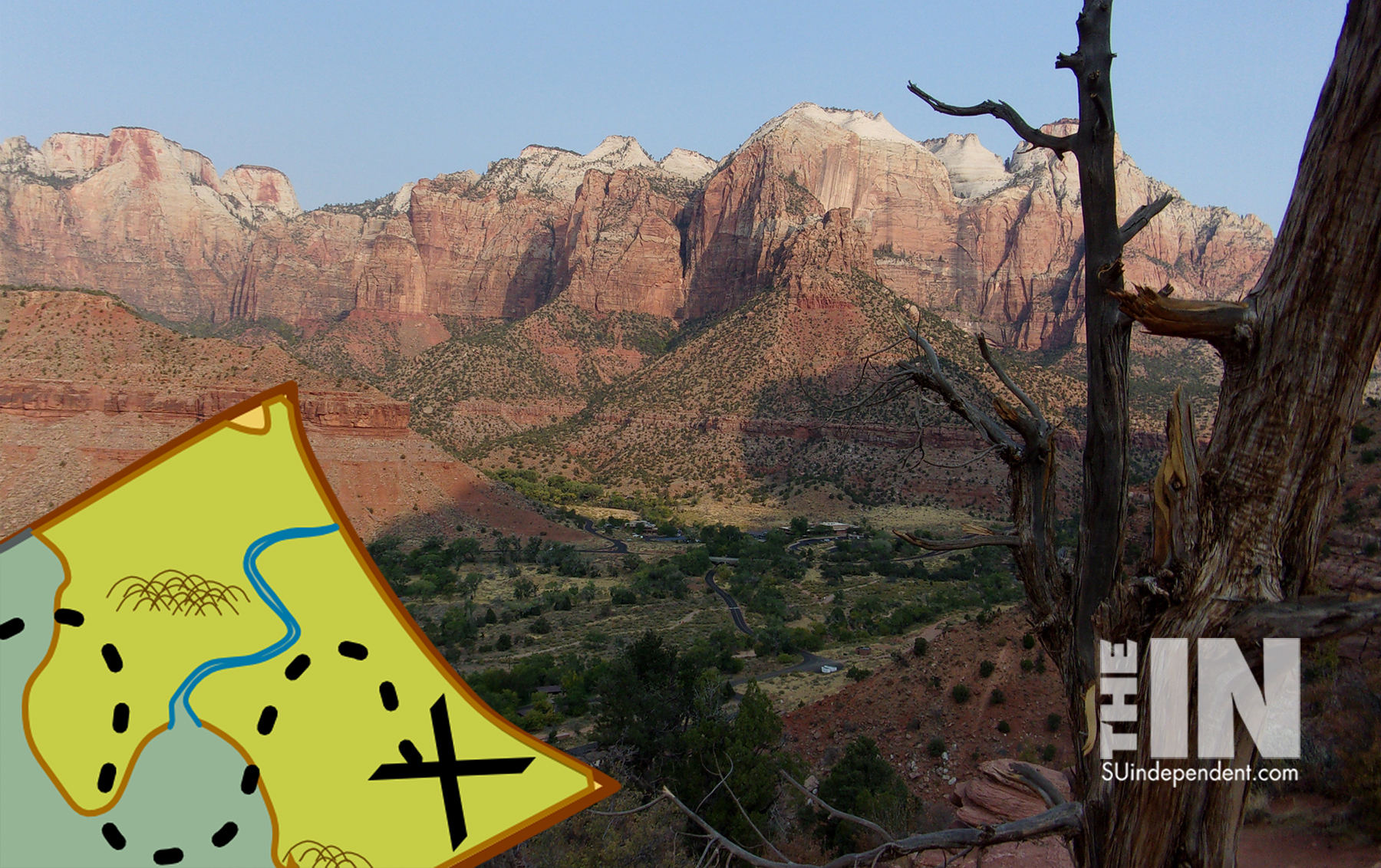
The elephant in the room in the current Washington County Commission election is the Lake Powell Pipeline. My Republican opponent, Dean Cox, thinks we should build the pipeline, no matter the cost, and has gone on record this week stating as much.
He claims we need to secure our rights to the water, but one of our local water managers recently expressed that we already have more than enough water to support three times the population we have here. And if you believe we have a right to it that will not be challenged by reallocation due to climate change or adjustment based on actual amount of existing water available, there’s no need to prematurely spend our tax dollars to secure it. Better to wait until we both have a need for it and we have a much larger population to pay for it.
My other Republican opponent (running unaffiliated), Greg Aldred, would prefer to try to make a deal for Snake Valley water — water we don’t have any right to and, again, simply don’t need.
They’re also using old numbers that have been proven by both the Federal Energy Regulatory Commission, the Utah Rivers Council, and 20 Utah economists to be simply wrong. The initial $1.5 billion cost, a conservative estimate, works out to about $8 billion once financing is worked in. A more realistic $3 billion initial build estimate, which would cover water pumping stations for an ill-conceived power generation project, would work out to more like $13 billion of your tax dollars.
Although some may question these cost projections, this “total cost of ownership” method of calculating the actual cost of the Lake Powell Pipeline is a far more honest and accurate way of looking at it. The initial price tag might be $1.5 billion, but we don’t have the cash to pay for it, so you must include the financing of it for the 50 to 90 years they’re proposing.
Fifty to 90 years is a very long time, folks. That means your children, grandchildren, and probably great-grandchildren would be paying for this project as well. No one can foretell the future, certainly not for that long of a timeline. Even our own Washington County Water Conservancy District is recognizing that climate change is affecting the flow of the water in the Colorado River, and best estimates say that it will be reduced by 10–30 percent or more during that time.
Utah may feel like it has the right to that 194 million acre-feet of water, but the reality is that this volume of water simply does not exist.
You simply cannot take water that doesn’t exist. Utah is nearly at its current limit at 1.186 million acre-feet per year of the 1.38 million acre-feet per year originally allocated in 1922. Since that allocation was based on an overestimate in the first place, it’s likely to be adjusted down at some point to reflect the actual amount of water that exists in the Colorado River.
And that says nothing about climate change. That’s based on the simple fact that the decade when the flow of Colorado River was measured was the wettest in recorded history. Rather than the 16 million acre-feet per year calculated and allocated at that time, the river’s flow has averaged about 12 million acre-feet of water annually since then.
The point is that Utah may feel like it has the right to that .194 million acre-feet of water, but the reality is that this volume of water simply does not exist.
Proof of this miscalculation and over-allocation is the fact that the Colorado River does not flow to the ocean despite other states also not taking their full legal share of it.
So we could build the pipeline, be on the hook for its immense expense, and simply not be able to access it because of legal or literal reasons, and possibly both.
Overuse here in the desert is also very real. We’re draining the local aquifers. Did you know that because of overuse, Pipe Springs will no longer produce any water within five years? We need to reduce our overall usage in order to preserve the way of life we’ve all come to enjoy here in Washington County.
The previously mentioned Utah economists have estimated that our current population, taking into account a three-percent growth rate, would have to have its cost for water increase sixfold, along with impact fees raised by $10,000, to pay for the Lake Powell Pipeline.
The problem with that is that if your family’s price per gallon of water were to go up six times, you would certainly buy less water. Raising rates of water is proven to reduce consumption. It’s a basic rule of supply and demand. So even those huge increases would not cover the immense cost of the pipeline.
Additionally, dramatic increases in impact fees, property taxes, state taxes, and increased water rates would ultimately deter people from living and moving here and drive away the average families with incomes similar to those of police officers, teachers, nurses, and service employees. That would then slow growth, putting the burden on a smaller population to repay.
Instead, alternative plans such as reuse, agricultural conversion (plenty of which has already occurred and much more will continue to occur as growth continues), development of local waters, and conservation can not only be implemented incrementally but also have little risk or downside.
Currently, your property taxes cover over 50 percent of the district’s cost to deliver the water to your home. If instead that part of your property taxes were removed and your water bill was adjusted to cover that portion, people would have an incentive to conserve.
If in addition to that conservation we slowly and voluntarily converted agricultural shares of water to culinary, developed reuse facilities and maximized our local available waters such as Ash Creek, we’d have more than enough water for the next 30 to 50 years. And that’s based on current technology. Who knows what may be invented or developed in that time.
So in summary, as the only candidate for Washington County Commissioner supporting the less expensive and less risky alternatives to the Lake Powell Pipeline, I ask you to consider voting for me on Nov. 8.
Articles related to “Why the Lake Powell Pipeline would cost Washington County families thousands of dollars”
POLL: Do you think the Lake Powell Pipeline is necessary for southern Utah?
Publisher’s Perspective: Why you should vote for me for Washington County Commissioner




You make total sense to me Mr. Warburton. Big developers would like to shut you up. So I’m willing to give you a try. Represent us, won’t you?
Can the county commission stop the project? It still isn’t clear to me who will be the final decider? The state?
the county commission? The water conservancy district? One thing is clear is that there are no plans of having the residents of Washington County playing a direct role — as in voting — in the decision.
The simple fact is St. George is in a desert and there isn’t much water in a desert. You say you want to wait for the population to grow before they build the pipeline. What makes you think the population is going to grow? Especially once the public hears there is a water issue. And they will hear about it. So the question is do you want the population to grow or not. There is never an easy answer when your trying to make decisions that require being able to see into the future with any accuracy. If your going to “Represent” people you should know that.
I’m all the way with you Josh